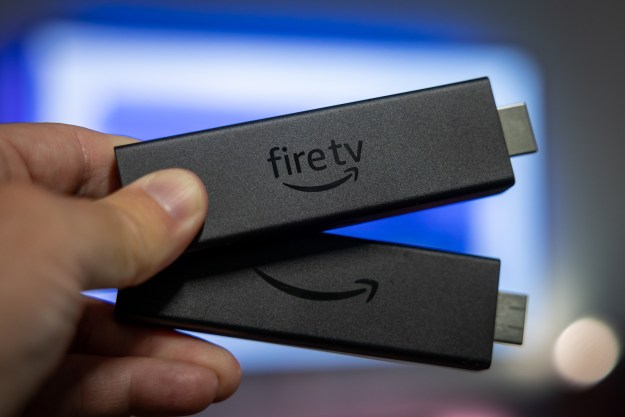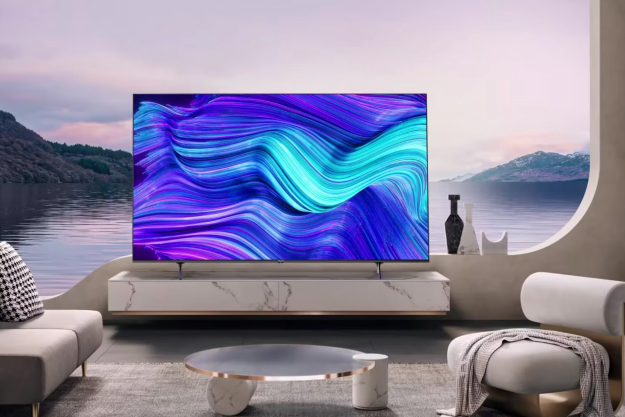
OK, I made that stat up. But it feels like it could be real, especially if you’re a parent to a teenage boy. Or if you’re a teenage boy.
Not surprisingly, there’s a popular belief in the tech world that if you want your new technology to succeed, you need the backing of the porn industry.
The example cited most is the VHS vs. Betamax battle for home video supremacy back of the late ‘70s and early ‘80s. As the tale goes, Sony’s Betamax format had the better video and audio quality, but VHS won in the end because more pornographic distributors backed it.
We now live in an age of “peak porn saturation.”
Much like my made-up stat up above, it’s a tale that feels true, so it gets retold over and over again, every time a new format war is on the horizon. We heard it during the Blu-Ray v. HD-DVD wars. It came up during the early stages of the Android v. iOS debate. And it’s starting to pop-up in discussions about the competing virtual reality formats currently vying for the marketplace.
But is it even true?
Well, it is true that Sony had a policy against pornographic material, whereas the VHS backers didn’t. And it’s also true that VHS was the cheaper format to mass produce, an attractive option for low-cost “independent filmmakers.” And, yes, it’s completely true that much of earliest content for VHS was X-rated.

Betamax videotapes could only hold an hour of content. Sure, porn producers preferred VHS because their tapes had twice the runtime, but so did everybody else.
Though Barss found porn’s role in the home video format war to be overstated (if non-existent), he did find that porn did have one major effect on home media as an overall industry. Barss writes:
In 1979, less than one per cent of American households owned a videocassette recorder. How could VCR companies survive with such dismal market penetration? It was thanks to pornography consumers, who were willing to pay top dollar for both the machines and the tapes. That premium helped offset the small size of the market, and keep it viable for everyone from VCR manufactures to local rental stores.
In other words: People willing to pay dearly for the ability to watch skin flicks from the comfort of their home helped keep the entire home video industry afloat long enough for the tech to mature and become affordable for the masses.
It makes sense, because you know who didn’t embrace “video cassette recorders” at first? The mainstream Hollywood studios. They were scared to death of the “R” in VCR. Worried about piracy, they were slow to release content in any home video format. Porn producers filled a very important hole. (Um … Let’s not focus too much on that last sentence … Moving on …)
Pornographic companies are not the secret “deciders” that many people make them out to be. They’re simply willing to go wherever the customers are, indiscriminate of medium or format.
The real power, as always, lies with the consumers. And the real lesson? Never underestimate the lengths people will go to look at naked pictures, as that has been the real secret driver of some cool new technologies. Such as…
E-commerce
Back in the mid-‘90s, people were willing to pay for porn, even on dial-up, but they wanted some assurance their credit-card info was safe. Porn websites were forced to adopt safer methods for online transactions years before Amazon or eBay came around.
Broadband Internet service
As with VCRs, Hollywood studios were also slow to embrace the web as a video-distribution tool (again, afraid of piracy… though this time they were right to be scared). Back in the late ‘90s, broadband ISPs were still able to make some major inroads, despite the lack of quality content. Studio fare like American Beauty might not have been streaming back in the year 2000, but American Booty was.
Snapchat
It’s a $20 billion company built on the back of sexting. What more do I need to say?
The power of porn-consuming consumers seems to have its limits, though.
We now live in an age of “peak porn saturation.” Porn has gone HD and 3D. People who have sex on camera get their own reality shows and media empires. Consuming porn at home is no longer just an attractive alternative to sleazy XXX theaters – it’s now the norm. And one’s access to XXX content is limited only by the power of their router’s content blocker (which most people don’t use).
Porn is now so prevalent and easy-to-access, people no longer have to go great lengths to get it. That has diminished its influence. As they say in Economics 101, the more there is of something in the marketplace, the less value it has. And the less people will spend to access it.
Porn is now so prevalent and easy-to-access, people no longer have to go great lengths to get it.
That may be why porn barely caused a blip in the Blu-ray vs. HD-DVD battle. In fact, many people predicted HD-DVD would win because porn producers preferred it, but Blu-ray still won in the end.
The existence of 3D porn couldn’t help raise 3D technology above the level of fad.
And VR porn? Oh, it’ll exist. But it’s become readily apparent that whichever VR platform wins in the coming years – Oculus, Sony, Steam, and Samsung all want to be the dominant player — it’ll be because of hardware considerations, affordability, and overall user experience. The technology is simply too complex to be decided by just one type of content.
Another drawback to the power of porn? Stigmatization. If a product or service gets too associated with pornography, that can hamper its attempts to go mainstream (no matter how profitable it is).
Take video on demand (VOD), for example. Originally I wanted to include VOD in the section of technologies that were boosted by porn. After all, “pay-per-view” was mostly synonymous with porn for most of the ‘90s. (Well, that and disappointing prize fights.)
But I actually think that the overreliance of cable providers on per-per-view porn actually hurt the VOD movement. VOD and porn were so closely related, that alone was reason for mainstream studios to look elsewhere for “legitimate” distribution methods. It took the arrival of iTunes and Netflix streaming to finally give VOD the push it needed to truly be accepted by the masses. What did Neflix and iTunes have? A large selection of mainstream content. What did they not have? Pornography. Even Netflix’s original series, despite their edgy, R-rated pedigrees, are relatively skin-free when compared to similar offerings from Showtime and HBO. (Maybe House of Cards needs a Ba-Da-Bing.)
Between America’s growing casual acceptance of nudity and the surplus of porn online, it could be a while until people’s desire for porn fuels more tech innovation.
Well, until they need sex robots …



